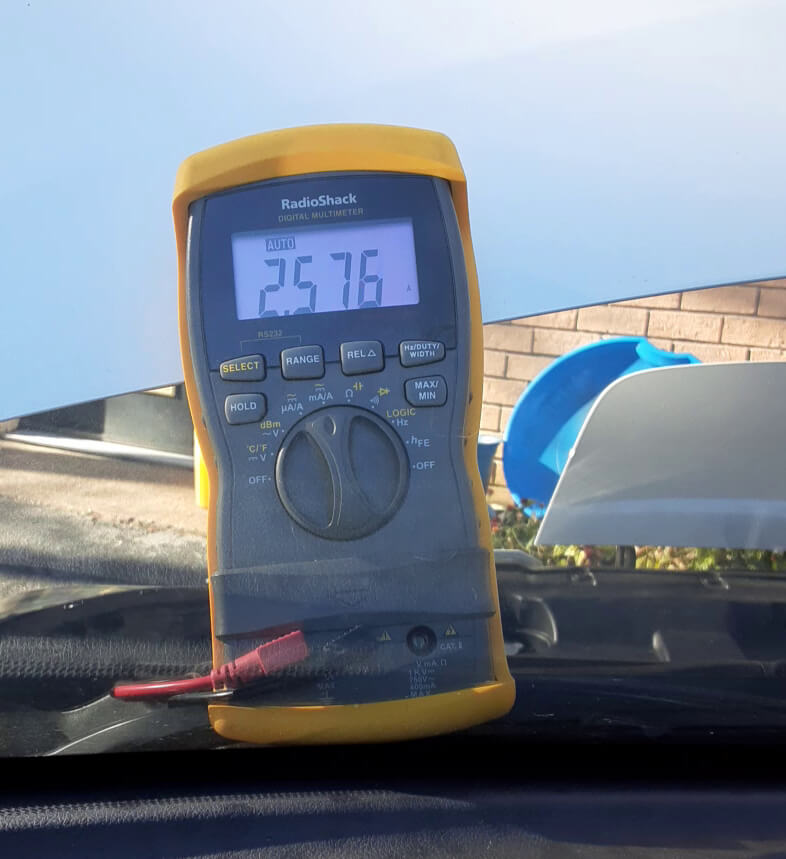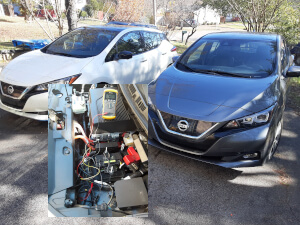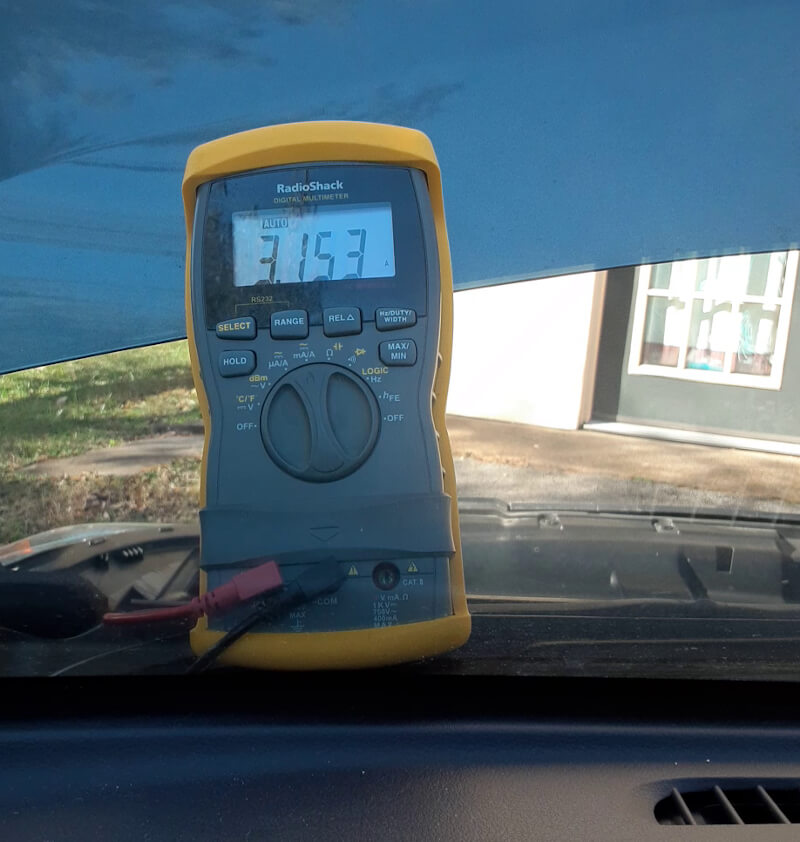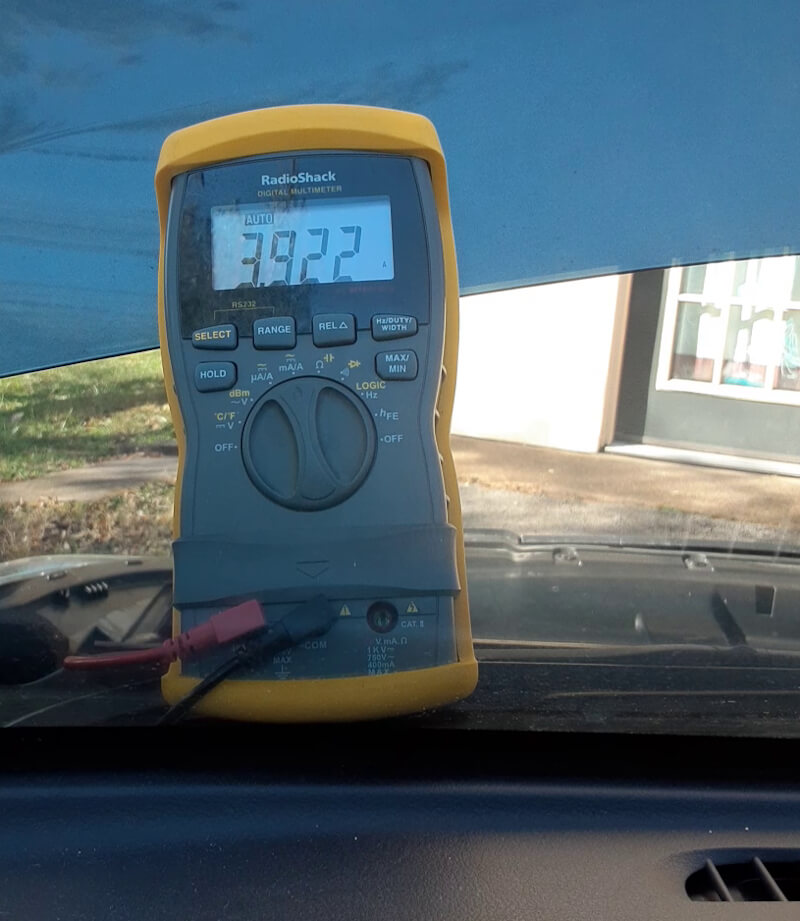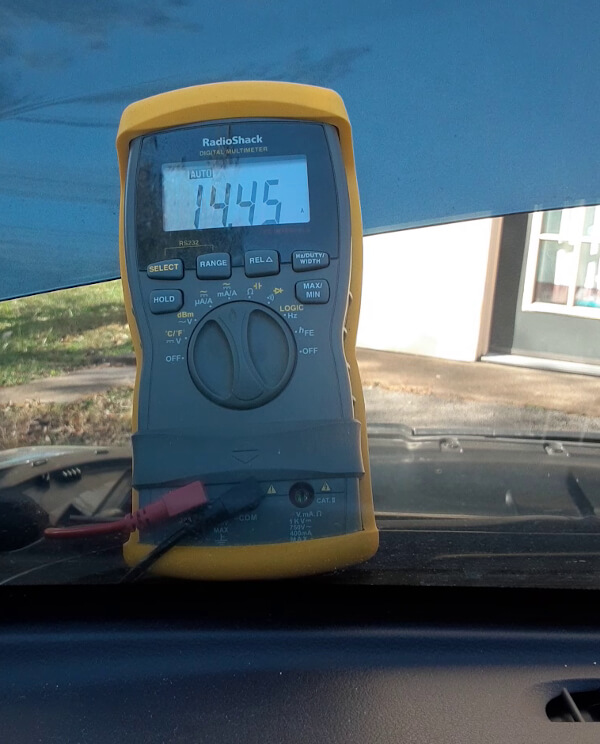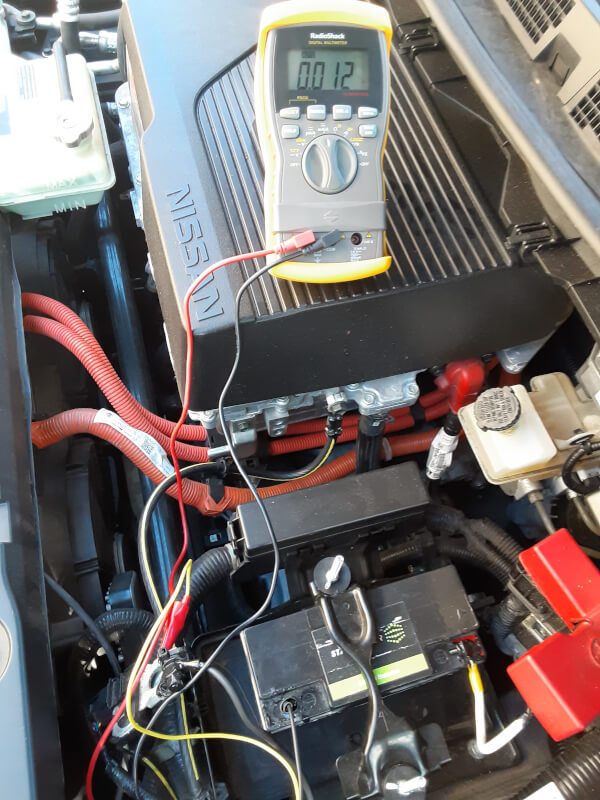knightmb
Well-known member
The question has come up before and it can be important when deciding why type of 12V battery you want to purchase if replacing a bad one or just wanting to replace the OEM 12V battery with something better.
The test I did below was on a Gen 2, 2020 Leaf, so these power readings may be more or less depending on the model year. At-least this can give some technical insight and general idea as to how much power is used and what parasitic drains exist between the Leaf being idle and trying to start it.
The first part of the setup is to intercept all the power on the 12V side. The only way to do this is to basically put a meter right into between the power connections to get a direct current measurement. Once I have a current measurement and a voltage reading from the 12V battery, I can do the easy math of V x I = P to get a good estimate on the power usage.
First we start with the battery voltage of the 12V when the Leaf is idle. For mine, idle voltage is 13.25V. I'm using a Lithium, not a Lead Acid OEM, so the resting voltage is going to be higher, but this won't affect our calculations for power usage.
Next I measure the resting current, in this case, mine was showing 0.126 A, which works out to 0.126 x 13.25 = 1.67 Watts of power. So the Leaf just sitting around doing nothing (no Cell communication for example), the Leaf is consuming about 1.67 watts of power from the 12V battery system.
Next, measure current when you step into the Leaf, sit down and put your feet on the Brake pedal right before you turn on the Leaf. As you can see, just doing all that already uses 3.321 Amps of current, even before I turn it on. So that works out to 3.321 x 13.0 = 43.2 watts of power. Why am I using 13.0 volts? Because the voltage goes down on the battery when you increase the load current. I only have one camera, so trying to get a picture of all the meters at once was beyond my single ability. I had to eyeball it while taking the picture and make note.
Finally, pressing the Start button on the Leaf, final picture shows the current used. 13.7 amps of current at 12.8 volts, that works out to 13.7 x 12.8 = 175.4 watts of power to start the Leaf. Now because just pressing the brake pedal in with the computer on uses 43.2 watts of power, we can figure that it probably takes about 175.4 - 43.2 = 132.2 watts of power to power up the main battery relays and have it take over the powering the entire Leaf. But...we can't get around starting the Leaf without having the brake pedal pressed in, so it makes sense to roll all that power into one reading since that is the peak the 12V battery is going to need to produce just to turn on the Leaf.
Hopefully this will answer my and your own question of curiosity about power usage on the 12V side of the Leaf.
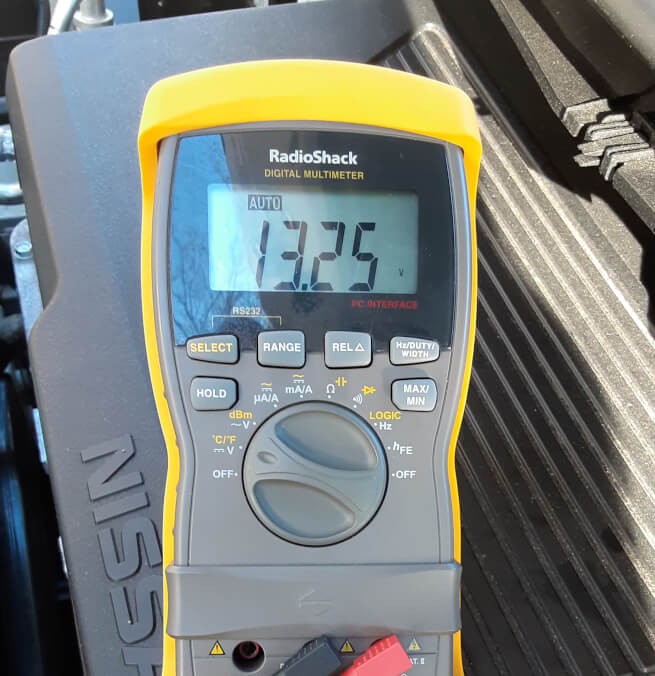
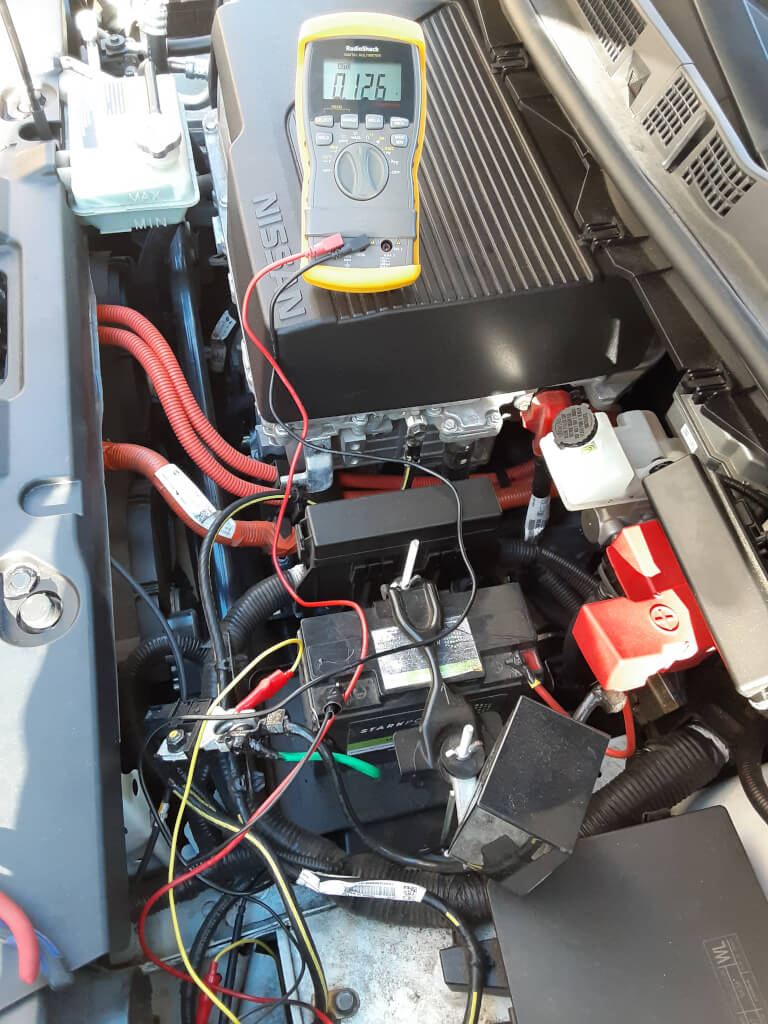
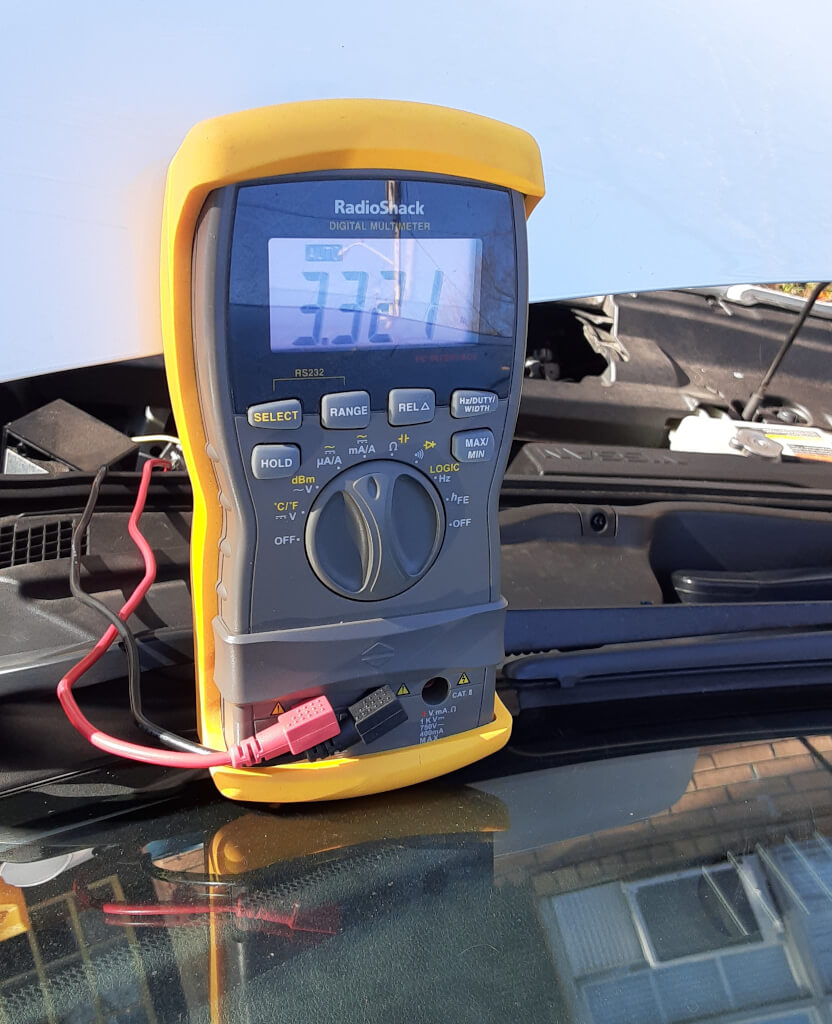
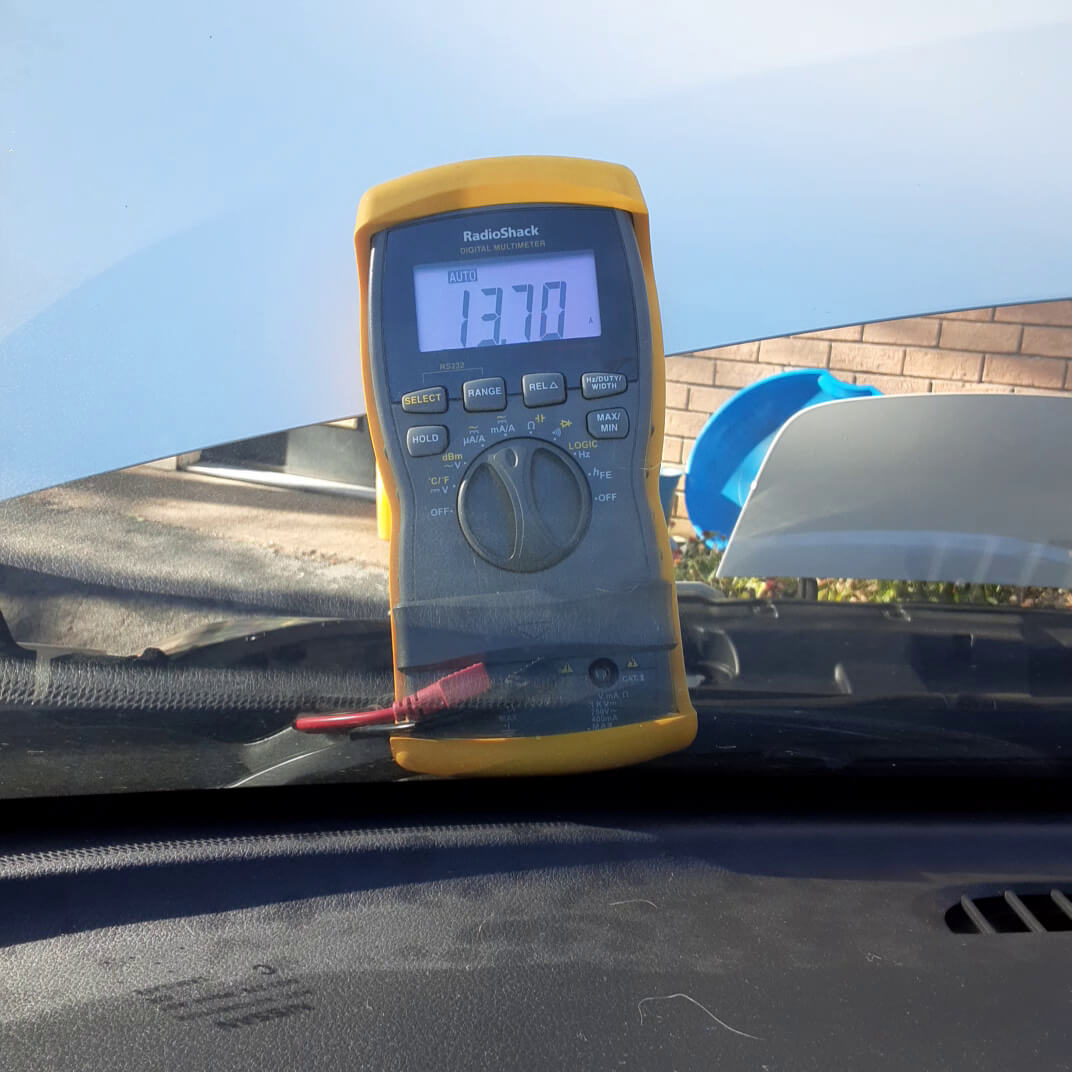
The test I did below was on a Gen 2, 2020 Leaf, so these power readings may be more or less depending on the model year. At-least this can give some technical insight and general idea as to how much power is used and what parasitic drains exist between the Leaf being idle and trying to start it.
The first part of the setup is to intercept all the power on the 12V side. The only way to do this is to basically put a meter right into between the power connections to get a direct current measurement. Once I have a current measurement and a voltage reading from the 12V battery, I can do the easy math of V x I = P to get a good estimate on the power usage.
First we start with the battery voltage of the 12V when the Leaf is idle. For mine, idle voltage is 13.25V. I'm using a Lithium, not a Lead Acid OEM, so the resting voltage is going to be higher, but this won't affect our calculations for power usage.
Next I measure the resting current, in this case, mine was showing 0.126 A, which works out to 0.126 x 13.25 = 1.67 Watts of power. So the Leaf just sitting around doing nothing (no Cell communication for example), the Leaf is consuming about 1.67 watts of power from the 12V battery system.
Next, measure current when you step into the Leaf, sit down and put your feet on the Brake pedal right before you turn on the Leaf. As you can see, just doing all that already uses 3.321 Amps of current, even before I turn it on. So that works out to 3.321 x 13.0 = 43.2 watts of power. Why am I using 13.0 volts? Because the voltage goes down on the battery when you increase the load current. I only have one camera, so trying to get a picture of all the meters at once was beyond my single ability. I had to eyeball it while taking the picture and make note.
Finally, pressing the Start button on the Leaf, final picture shows the current used. 13.7 amps of current at 12.8 volts, that works out to 13.7 x 12.8 = 175.4 watts of power to start the Leaf. Now because just pressing the brake pedal in with the computer on uses 43.2 watts of power, we can figure that it probably takes about 175.4 - 43.2 = 132.2 watts of power to power up the main battery relays and have it take over the powering the entire Leaf. But...we can't get around starting the Leaf without having the brake pedal pressed in, so it makes sense to roll all that power into one reading since that is the peak the 12V battery is going to need to produce just to turn on the Leaf.
Hopefully this will answer my and your own question of curiosity about power usage on the 12V side of the Leaf.





